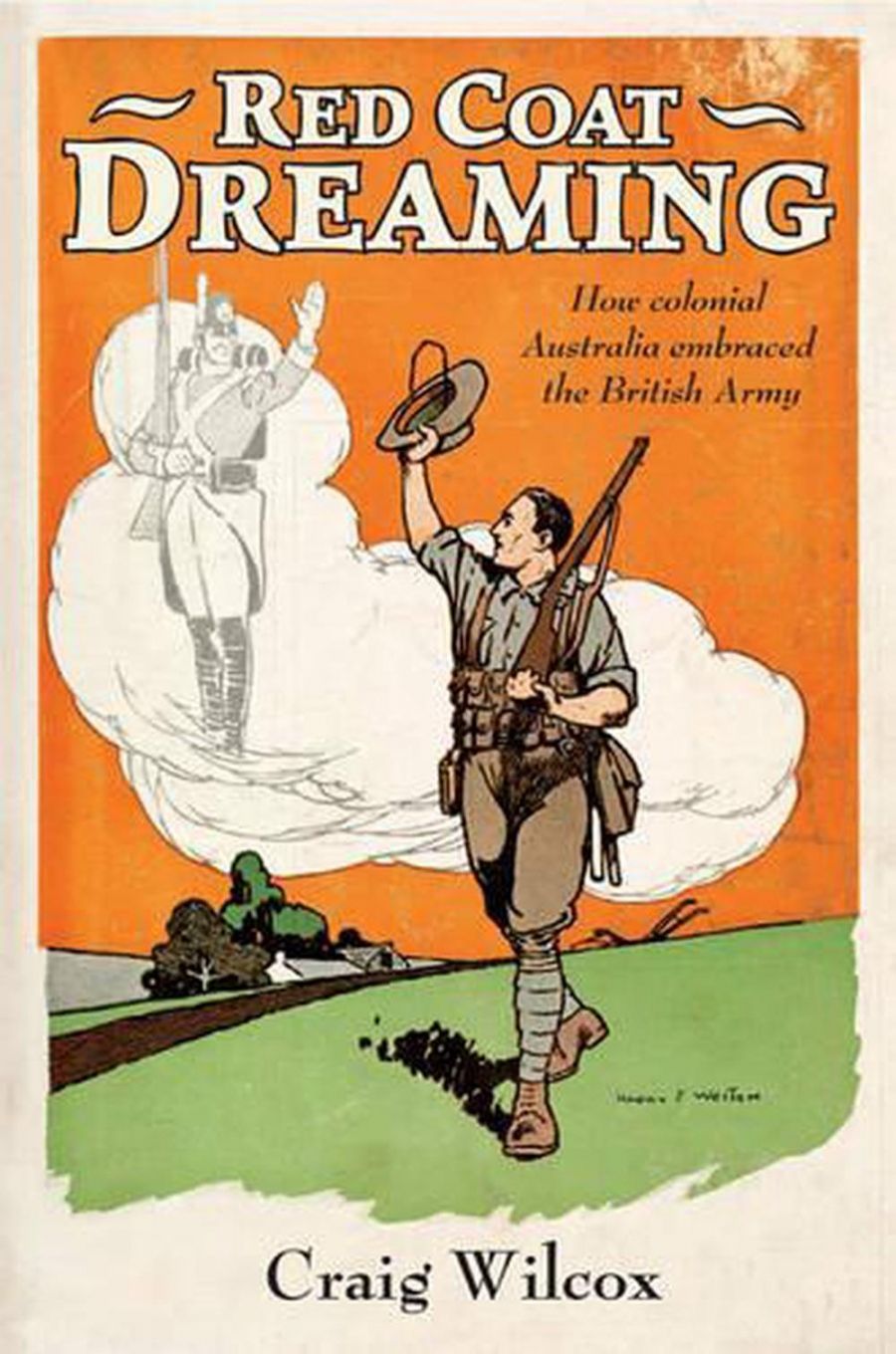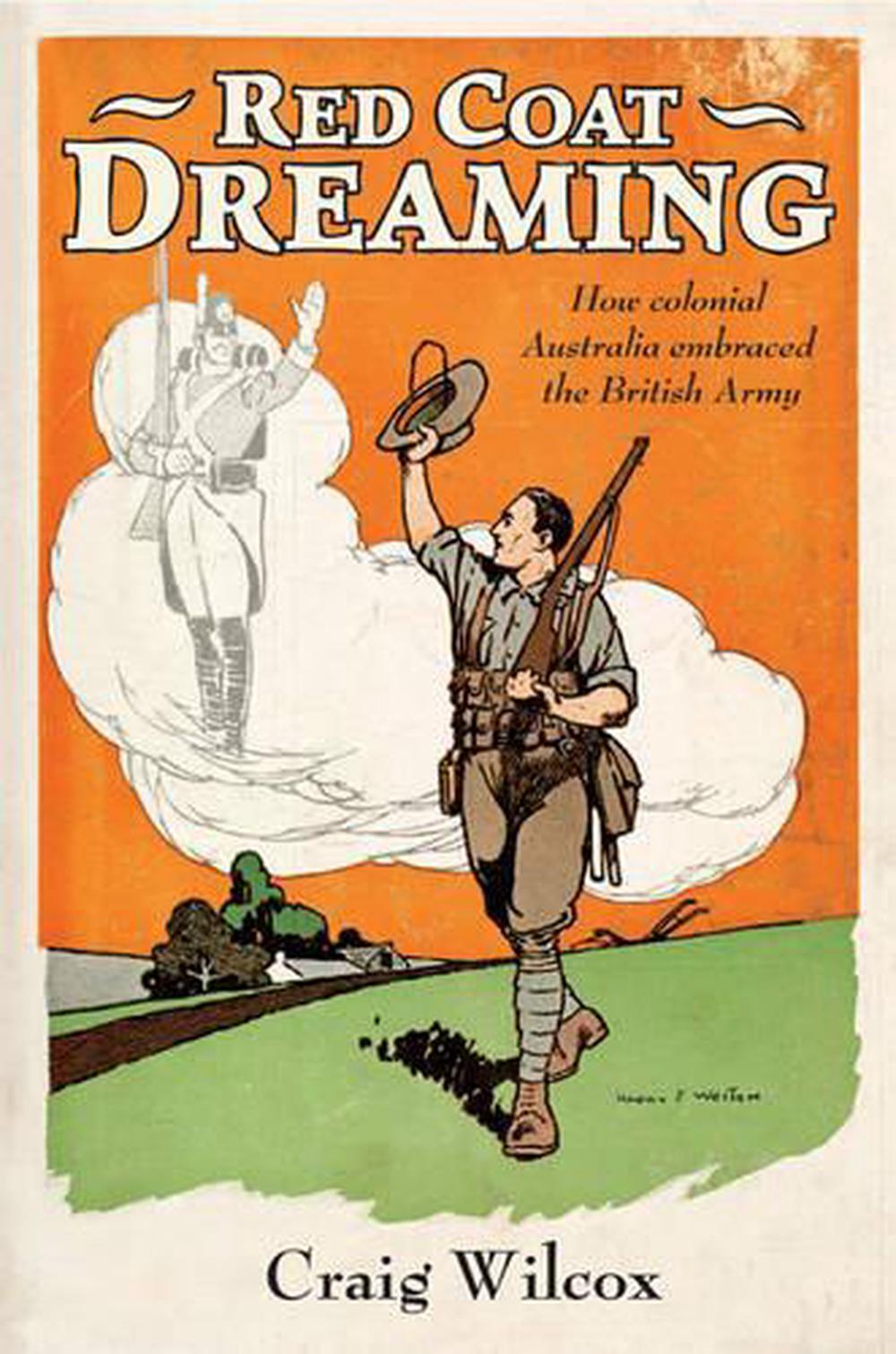
- Free Article: No
- Contents Category: Military History
- Review Article: Yes
- Article Title: Crimson ties
- Online Only: No
- Custom Highlight Text:
It is ironic that I am writing this review on the tenth anniversary of the comprehensive defeat of the Republican referendum in 1999. This book by Craig Wilcox sets out to tell us that the British army (the Red Coats of the title) was much more popular in the colony than we had hitherto thought. Indeed, on the evidence, it was more popular in Australia than it ever was in Britain, which, even in the nineteenth century, had no love for standing armies.
- Book 1 Title: Red Coat Dreaming
- Book 1 Subtitle: How Colonial Australia Embraced The British Army
- Book 1 Biblio: Cambridge University Press, $39.95 hb, 196 pp
- Book 1 Cover Small (400 x 600):

Wilcox goes on to make an excellent case for the Battle of Waterloo as a proto-Anzac day in the early colony. The news of Napoleon’s defeat took seven months to reach Australia, but the locals made up for it by throwing parties and balls and naming almost any feature they came across after the town in Belgium or the victor, Wellington. Later, when regiments that had fought at the battle were sent to Australia, they were fêted as heroes. The Australian contingents that were sent to South Africa to fight the Boers were, in the words of ‘Banjo’ Paterson, proud to serve ‘beside the English regiments that fought at Waterloo’. Later, as Redvers Buller proved incapable of defeating the wily farmers, a certain disillusionment must have set in, but the first impulse is notable.
Australians (when is it in our history that we cease to be British and become Australians?) even joined the British army. One remarkable man, Spicer Cookworthy, took part in the Crimean War (oddly, he made landfall in Turkey at Gallipoli), a conflict that Wilcox makes clear was very popular in the colony – again, one suspects that its popularity here exceeded that in Britain. There was an immediate outbreak of Crimean names in the Australian countryside. I grew up a few miles from towns called Alma and Balaklava – and now I think of it, one called Waterloo.
Australians showed that they admired the British army in other ways. They married into it, often moving up in social class if the officer was well connected; celebrated the winning of medals, even if won, as one VC was, in putting down the Indian Mutiny (that medal can be seen in the Australian War Memorial and was won by the colourfully named Frederick Whirlpool). Moreover, when the Volunteer movement began in Australia, they soon changed from their drab grey uniforms to the scarlet of what one suspects they regarded as the ‘real’ army. When a change was made for the more practical khaki of the South African war, it ‘seriously affected recruiting’, according to a Tasmanian colonel.
Many of Wilcox’s chapters are based around an artefact of the old army, a uniform, a painting or a diary. One of the best is his chapter on The Defence of Rorke’s Drift, by Alphonse de Neuville. When the painting was exhibited in London in the 1880s, at least fifty thousand people paid to see it, and innumerable prints were made of it. Such was its popularity that the newly formed Art Gallery of New South Wales determined to acquire it and, surprisingly, succeeded. Despite the colonial snobs who deplored it as ‘not really art’, it proved immensely popular with the public, rapidly becoming the most visited painting in the gallery.
Wilcox concludes with that celebration of the Victorian army, Deeds That Won the Empire: Historic Battle Scenes (1897), by the Reverend W.H. Fitchett, which, to my surprise, was first published in Melbourne and only later in London. This book, which must have been read by most boys in the early years of the twentieth century, was enormously influential in spreading a patriotic and martial view of Britain’s rather patchy military performance since Waterloo. Fitchett was apparently worried that Australians might fail to do their duty in any future conflict in which Britain was involved. He need not have worried, as Australian endeavours between 1914 and 1918 attest.
Overall, this is an interesting book and a timely reminder that it is dangerous and usually inaccurate to view the past through the prism of the present. There seems little doubt that Australians thought more of Waterloo and the Crimea than they ever did of Eureka, which, of course, the Red Coats helped put down. History is often at odds with what we think it should be, and we should thank Craig Wilcox for once more reminding us of that lesson.


Comments powered by CComment